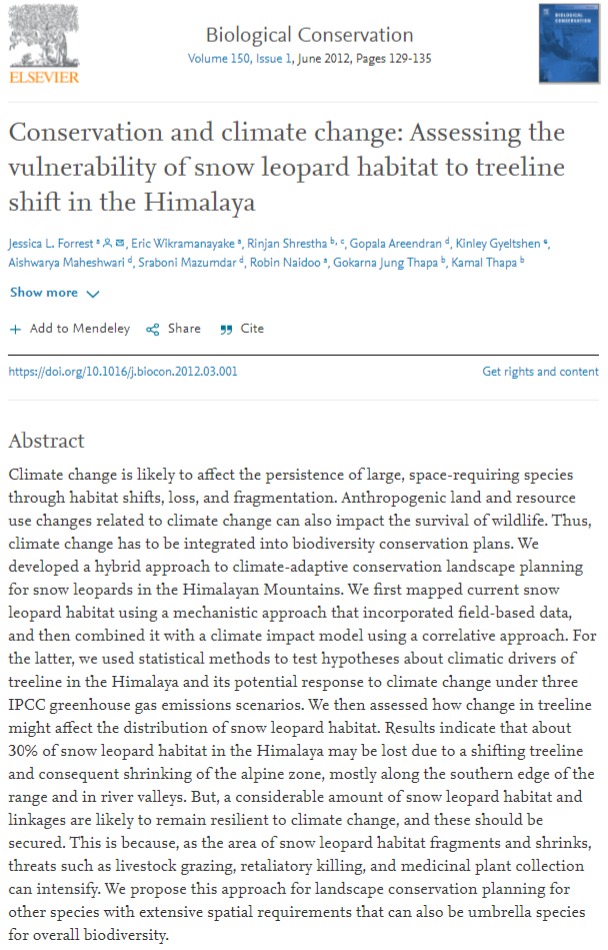
Climate change is likely to affect the persistence of large, space-requiring species through habitat shifts, loss, and fragmentation. Anthropogenic land and resource use changes related to climate change can also impact the survival of wildlife. Thus, climate change has to be integrated into biodiversity conservation plans. We developed a hybrid approach to climate-adaptive conservation landscape planning for snow leopards in the Himalayan Mountains. We first mapped current snow leopard habitat using a mechanistic approach that incorporated field-based data, and then combined it with a climate impact model using a correlative approach. For the latter, we used statistical methods to test hypotheses about climatic drivers of treeline in the Himalaya and its potential response to climate change under three IPCC greenhouse gas emissions scenarios. We then assessed how change in treeline might affect the distribution of snow leopard habitat. Results indicate that about 30% of snow leopard habitat in the Himalaya may be lost due to a shifting treeline and consequent shrinking of the alpine zone, mostly along the southern edge of the range and in river valleys. But, a considerable amount of snow leopard habitat and linkages are likely to remain resilient to climate change, and these should be secured. This is because, as the area of snow leopard habitat fragments and shrinks, threats such as livestock grazing, retaliatory killing, and medicinal plant collection can intensify. We propose this approach for landscape conservation planning for other species with extensive spatial requirements that can also be umbrella species for overall biodiversity.